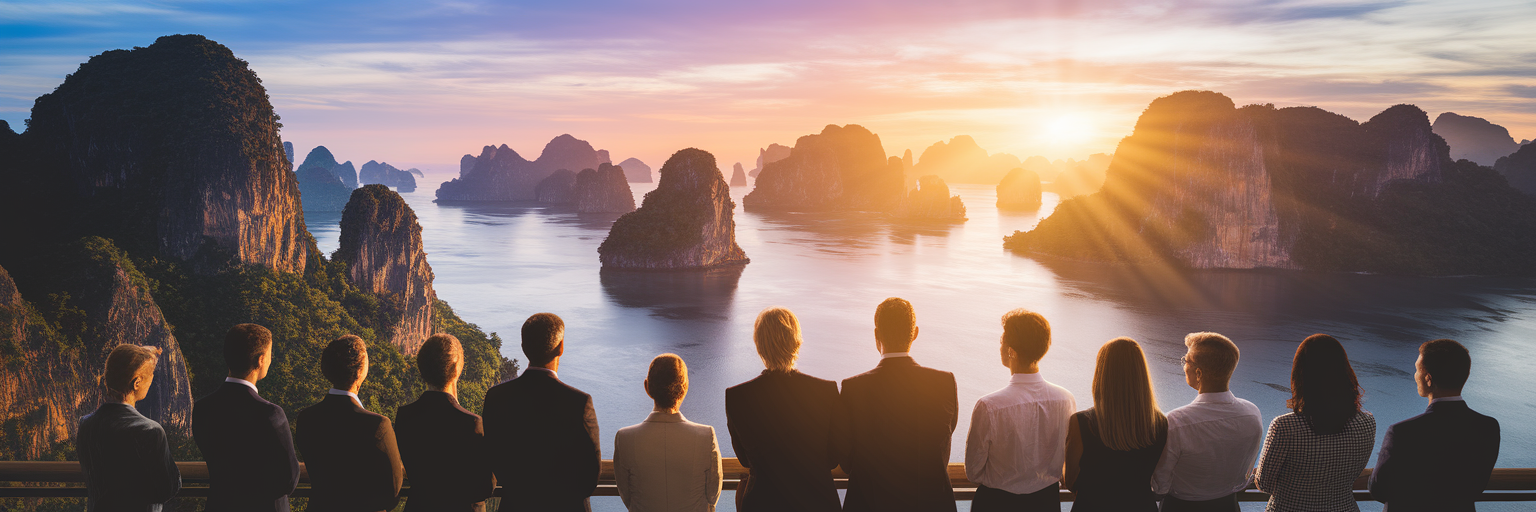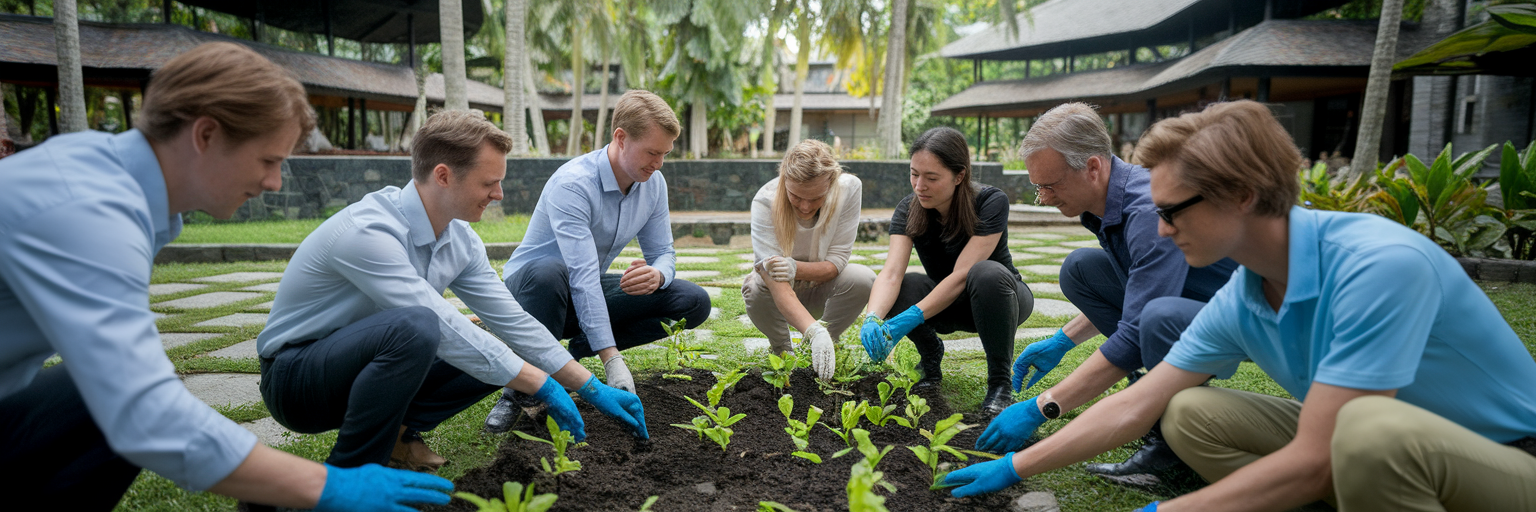Beyond the Boardroom: Crafting Leadership Journeys in Southeast Asia
Discover the key elements of creating purposeful and memorable leadership development journeys across APAC.

Discover the key elements of creating purposeful and memorable leadership development journeys across APAC.

For decades, leadership training was confined to conference rooms, built around slide decks and theoretical models. But today’s high-performing leaders are not looking for another seminar. They seek experiences that challenge their perspectives and build resilience. This is where the limitations of traditional training become clear. True growth happens when leaders are removed from their comfort zones and immersed in new environments.
Southeast Asia offers more than just a scenic backdrop; it is a dynamic living classroom for modern leadership. Consider the rapid innovation shaping Singapore’s economy or the intricate cultural dynamics of conducting business across the region. These are not abstract concepts but tangible realities that teach adaptability and a global mindset far more effectively than any textbook. This shift transforms a trip from a simple reward into a strategic investment in human capital.
Well-designed experiential leadership development uses travel as a tool for profound behavioral change. It moves beyond tourism to create curated moments of learning and self-discovery. These journeys are meticulously designed to align with corporate goals, and our bespoke experiences are crafted to turn a trip into a strategic investment in your leadership team.

An impactful leadership journey is built on more than a packed itinerary. Its true power lies in its emotional core. We have all sat through presentations filled with generic case studies that fail to connect. Lasting change is sparked by authentic storytelling and shared vulnerability, not by reciting business theory. The content must resonate with universal leadership challenges while being grounded in the specific cultural contexts of Asia.
A critical component is the creation of psychological safety. This is the foundation that allows executives to lower their guard, admit to failures, and build genuine trust with their peers. Think of that moment in a workshop when a difficult truth is shared, and the entire room shifts. That is where real team cohesion begins. To get there, you need an environment where people feel secure enough to be themselves.
This is why emotional intelligence (EQ) workshops are not optional add-ons but integral to the program’s design. These sessions must provide practical, applicable skills in self-awareness, empathy, and conflict resolution that leaders can use immediately in high-pressure situations. The techniques used to build this connection draw from the same principles needed to create powerful digital experiences, where genuine engagement is paramount.
In a region as diverse as APAC, inclusivity is not a buzzword; it is a strategic imperative for effective leadership development. Creating inclusive corporate events means intentionally designing every aspect of the journey to ensure every participant feels seen, valued, and respected. This goes far beyond a single diversity and inclusion session. It is about embedding these principles into the very fabric of the experience.
A truly inclusive program is built on several key pillars:
This focus on varied viewpoints is echoed by major regional forums. As highlighted by the AVPN Southeast Asia Summit, diverse leadership teams consistently drive superior innovation and outcomes. When every leader feels they belong, they are empowered to contribute their best.

Sustainability in corporate travel should be more than a policy; it should be a core leadership lesson. Instead of treating it as a checkbox, we integrate responsible practices directly into the itinerary, turning sustainable MICE events into powerful teaching moments. The goal is to create hands-on experiences that connect environmental and social responsibility to fundamental business principles.
Imagine your team not just hearing about conservation but actively participating in a mangrove restoration project on the Thai coast. Or instead of a standard team-building exercise, they engage with local artisans who champion circular economy principles. These immersive activities, whether in the city or serene coastal areas, are central to our work in Bangkok and beyond. They transform abstract concepts into lived experiences.
These actions directly reinforce key leadership competencies. Making responsible choices on a trip demonstrates a commitment that resonates with both company values and the personal ethics of modern leaders. Here is how these activities translate into leadership skills on corporate retreats in Southeast Asia:
| Sustainable Activity | Environmental/Community Impact | Leadership Principle Reinforced |
|---|---|---|
| Mangrove Reforestation in Coastal Thailand | Protects coastlines, sequesters carbon, and supports local biodiversity. | Long-Term Vision & Community Stewardship |
| Workshop with Local Artisans Using Upcycled Materials | Supports the circular economy and preserves traditional crafts. | Innovation & Resourcefulness |
| Sourcing Food from a Farm-to-Table Organic Farm | Reduces food miles, promotes healthy living, and supports local agriculture. | Supply Chain Integrity & Accountability |
| Utilizing Electric Tuk-Tuks or Boats for Transport | Lowers carbon footprint and reduces air and noise pollution. | Responsible Decision-Making & Foresight |
Note: These examples are designed to be integrated into corporate retreats in Southeast Asia, turning sustainability from a concept into a lived experience that reinforces key leadership skills.
How do you measure the success of a leadership journey? Standard satisfaction surveys can tell you if participants enjoyed the food, but they reveal little about actual growth. The true return on investment for leadership incentive travel is measured in long-term, observable behavioral change. This requires a more deliberate approach to tracking impact.
To capture meaningful data, we focus on several methods:
The journey does not end when the plane lands. To ensure the lessons are embedded into daily operations, it is crucial to use effective frameworks for sustaining leadership development that support ongoing growth. Follow-up coaching and peer accountability groups are essential for turning inspiration into lasting habit. Designing a journey with measurable, long-term impact requires a partner dedicated to understanding your unique leadership goals.